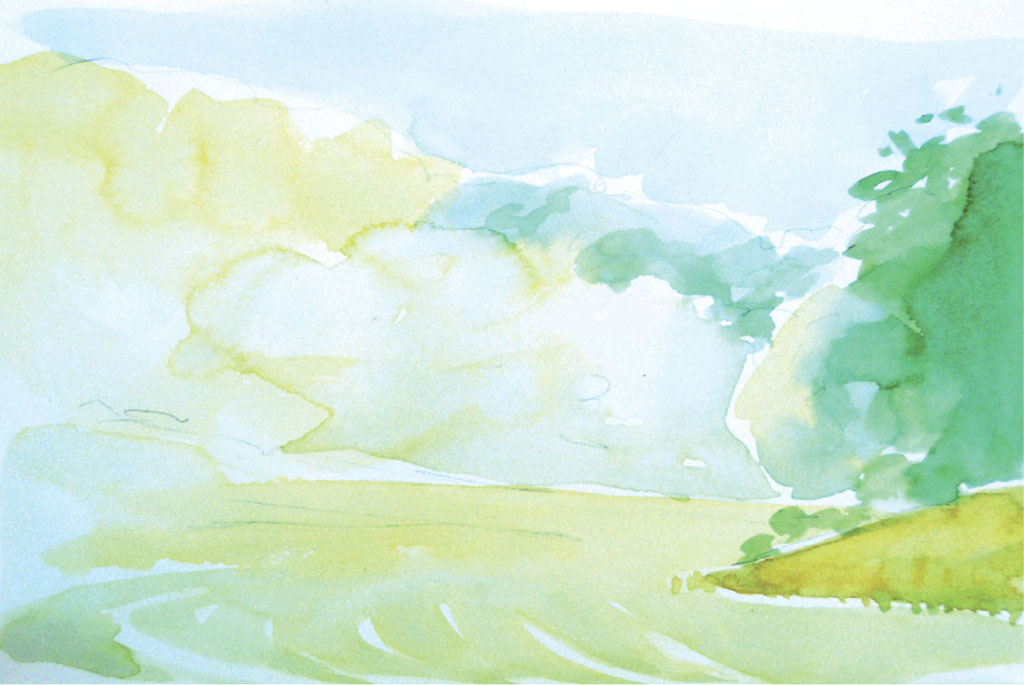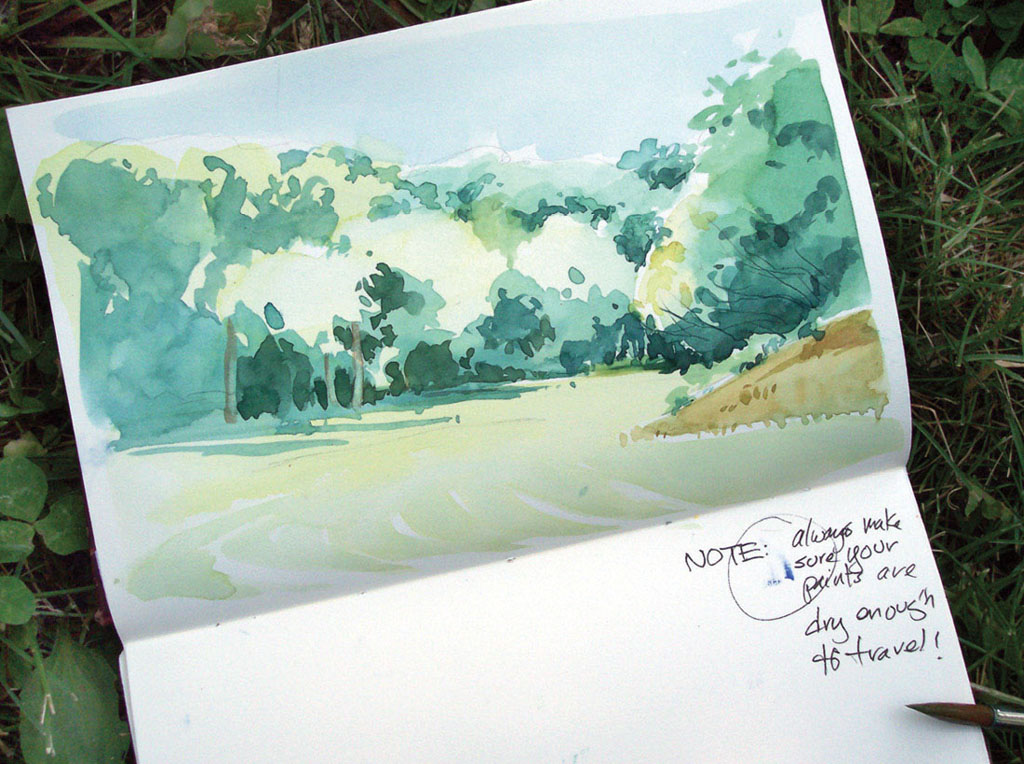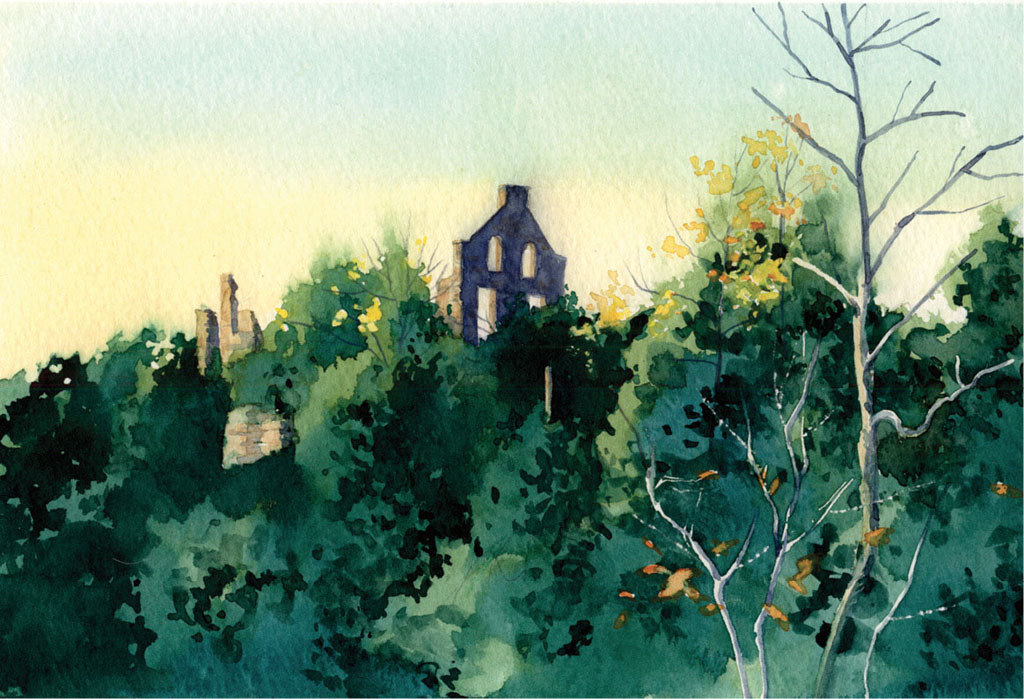
You won’t see individual trees from root to crown when they are massed in a distant landscape, but you may still need to suggest that this is a forest made up of many different trees, not a single organism. There are almost as many ways of doing this as there are artists, but here’s one that works quite simply.
Fabriano hot-pressed watercolor paper
Burnt Sienna, Cadmium Yellow Medium Hue, Cobalt Blue, Phthalo Blue, Yellow Ochre
1⁄2-inch (13mm) flat
nos. 3 and 7 rounds
mechanical pencil

Begin by laying in the basic shape of the forest’s foliage mass, allowing for some variation in edge, color and shape to suggest different individual trees. (If you want to suggest some lighter trunks or branches, you can mask them out before painting or lift them with a damp brush and clean water.) Let your brush dance along the edges to give a lacy, foliage-like effect.
Drop in color at this point to make wet-into-wet areas of shadow or varying color. Let this dry thoroughly. I used a mixture of Cadmium Yellow Medium Hue and Phthalo Blue, mixing in a heavier amount of yellow for the right side. I used Yellow Ochre for the right bank.

Suggest some shadow shapes to give the trees in your forest volume. Use a darker shade of the color you’ve mixed from Phthalo Blue and Cadmium Yellow Medium Hue or a wash of cool Phthalo Blue. The shadow shapes can have lacy brush marks at their edges, too.

Let the shadows dry. Paint a few limbs or trunks within these dark shapes using Burnt Sienna and Cobalt Blue, and add little bare twigs at the edges. You can suggest a bit of detail by drawing back into a damp wash with the tip of a sharp mechanical pencil. It will bruise the fiber of the paper, making it take the pigment more deeply. You’re not so much drawing graphite lines as making the paper respond differently when it’s wet.

East Valley Park, East End
Watercolor on Fabriano hot-pressed watercolor paper
5" × 7" (13cm × 18cm)
After I got home, I refined the shadows a bit and added more suggestions of lacy foliage. I watched for the negative shapes and added deeper glazes of color to suggest these shadowy areas. Phthalo Blue and Burnt Sienna make a wonderful deep green. Small squiggles and dots suggest foliage.

Hill Castle
Watercolor on Strathmore cold-pressed watercolor paper
9" × 12" (23cm × 30cm)
If you want more complexity, first use masking liquid to preserve some light-struck, lacy leaves and lighter branches, as I did here. Then proceed more or less as before. Allow everything to dry, and remove the mask.
You’ll have hard edges where the mask was, so you’ll want to soften them with a brush dampened in clear water. Scrub here and there and lift the loosened pigment with a tissue. Then, using a small brush, add color and any details you wish.